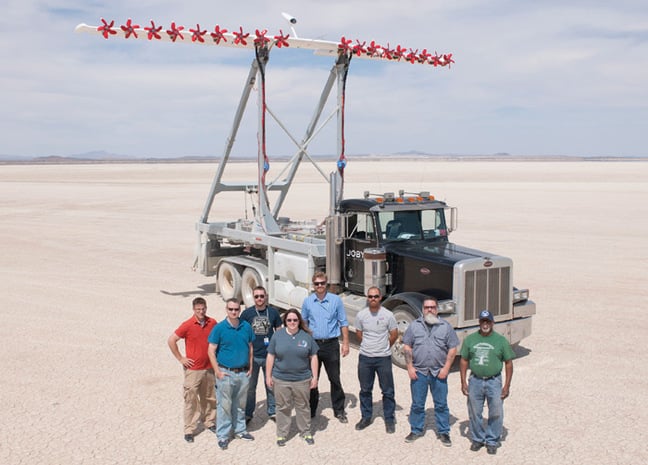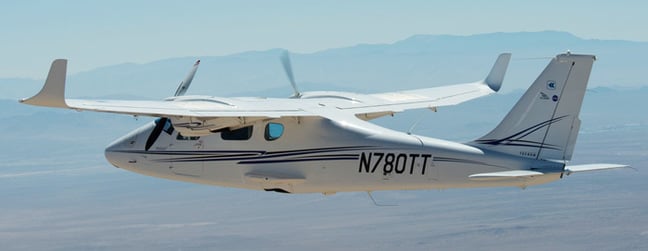This article is more than 1 year old
NASA charges up 18-prop electric X-plane
Battery-powered 'Sceptor' set for 2019 launch
NASA is working towards getting an electric-powered multiprop experimental aircraft off the ground, with an eye to future "greater fuel efficiency, improved performance and ride quality and aircraft noise reduction".
The Sceptor (Scalable Convergent Electric Propulsion Technology and Operations Research) project will ultimately involve whipping the wings off a Tecnam P2006T aircraft and replacing them with a Leading Edge Asynchronous* Propeller Technology (Leaptech) aerofoil.

Leaptech wing: Aeronautically and acronymically impressive in equal measure. Pic: NASA
The experimental version of the carbon composite Leaptech wing is 9.5m (31ft) across, and packs "18 electric motors powered by lithium iron phosphate batteries".
Leaptech has already benefited from testing atop the Hybrid Electric Integrated Systems Testbed (HEIST) - "a specially modified truck ... used for a series of research projects intended to integrate complex electric propulsion systems".

This is a HEIST: Leaptech team members (from L-R) Brian Soukup, Sean Clarke, Douglas Howe, Dena Gruca, Kurt Papathakis, Jason Denman, Vincent Bayne and Freddie Graham. Pic: NASA / Tom Tschida
NASA explains that scientists "used the testbed to measure lift, drag, pitching moment and rolling moment that can validate research tools". The space agency adds: "Tests so far show the distribution of power among the 18 motors creates more than double the lift at lower speeds than traditional systems."
In parallel with this ground-based work, NASA flyboys have been taking up a Tecnam P2006T with its standard supplied wings to collect data for later comparison with the Sceptor. "An advantage of modifying an existing aircraft is engineers will be able to compare the performance of the proposed experimental airplane with the original configuration," Sceptor co-principal investigator Sean Clarke noted.

NASA puts the unmodified Tecnam P2006T through its paces. Pic NASA / Carla Thomas
It's hoped that Sceptor will get airborne in 2019. It'll be a nine-passenger aircraft "with a 500-kilowatt power system". NASA elaborates: "To put that in perspective, 500 kilowatts (nearly 700 horsepower) is about five times as powerful as an average modern passenger car engine." ®
Bootnote
*Asynchronous, we assume, because "each motor can be operated independently at different speeds for optimized performance".
